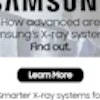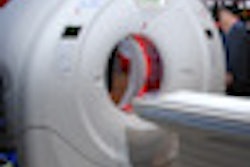Fujifilm Medical Systems USA is highlighting a number of new digital radiography (DR) features and products at the 2012 RSNA meeting in Chicago.
Fuji's new DR platforms feature irradiated side sample (ISS) and dynamic visualization (DV) to boost imaging quality, according to the company. ISS senses x-rays at the top detector layer to minimize blur and capture sharper signals. DV clarifies images for higher visibility details and enables a wider range of window and leveling.
FDR-flex is a new lightweight DR system that can be hand-carried. It integrates with Fuji's wireless FDR D-Evo flat-panel detectors, DR-optimized laptop console, and supporting communications box.
FDR Go2-flex is a hybrid DR portable system that combines the features of a fully integrated DR portable device with the FDR D-Evo detectors with the versatility of computed radiography.
FDR AcSelerate-flex is a new option to Fuji's fully automated positioning x-ray room suite. It includes a table with removable FDR D-Evo detector capability, extending the flexibility for uses such as for cross-table, tabletop, and wheelchair exams.
Dual-energy subtraction and tomosynthesis are the two newest applications added to Fuji's FDR AcSelerate DR system.
The dual-energy subtraction application includes advanced processing algorithms. Multistage registration (MSR) corrects and compensates for patient motion, breathing, or heartbeat artifacts. Patient size compensation recognizes high-density anatomy to optimize and clarify over- or underpenetrated image areas. Advanced noise reduction selectively helps suppress noise at multiple frequency levels without losing sharpness.
Shown as a work-in-progress, FDR AcSelerate's tomosynthesis application captures up to 60 exposures in single sweep of the detector. Images can be displayed in either tilting mode or stack mode on a second monitor, as well as on a PACS workstation in a cine mode or frame by frame.



















